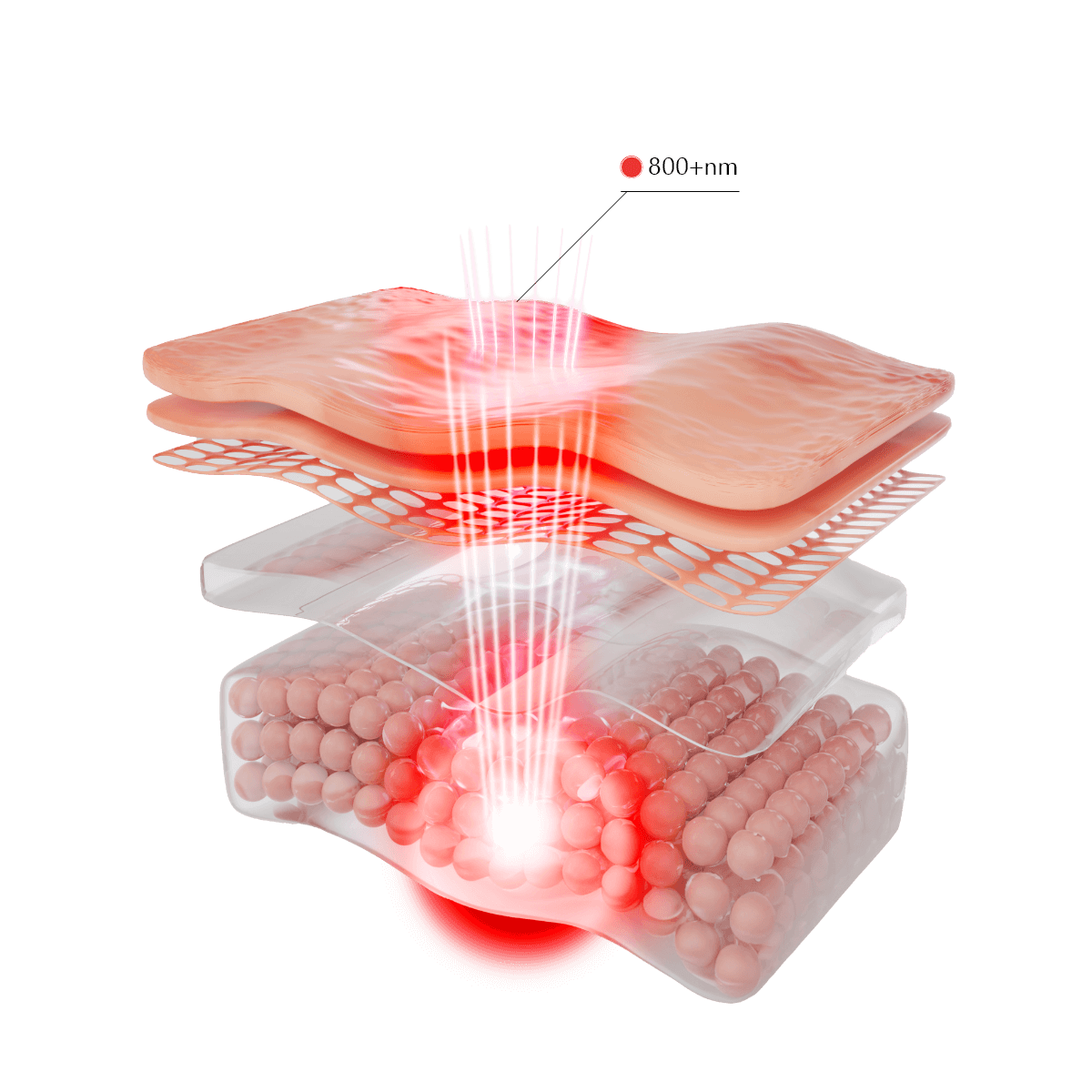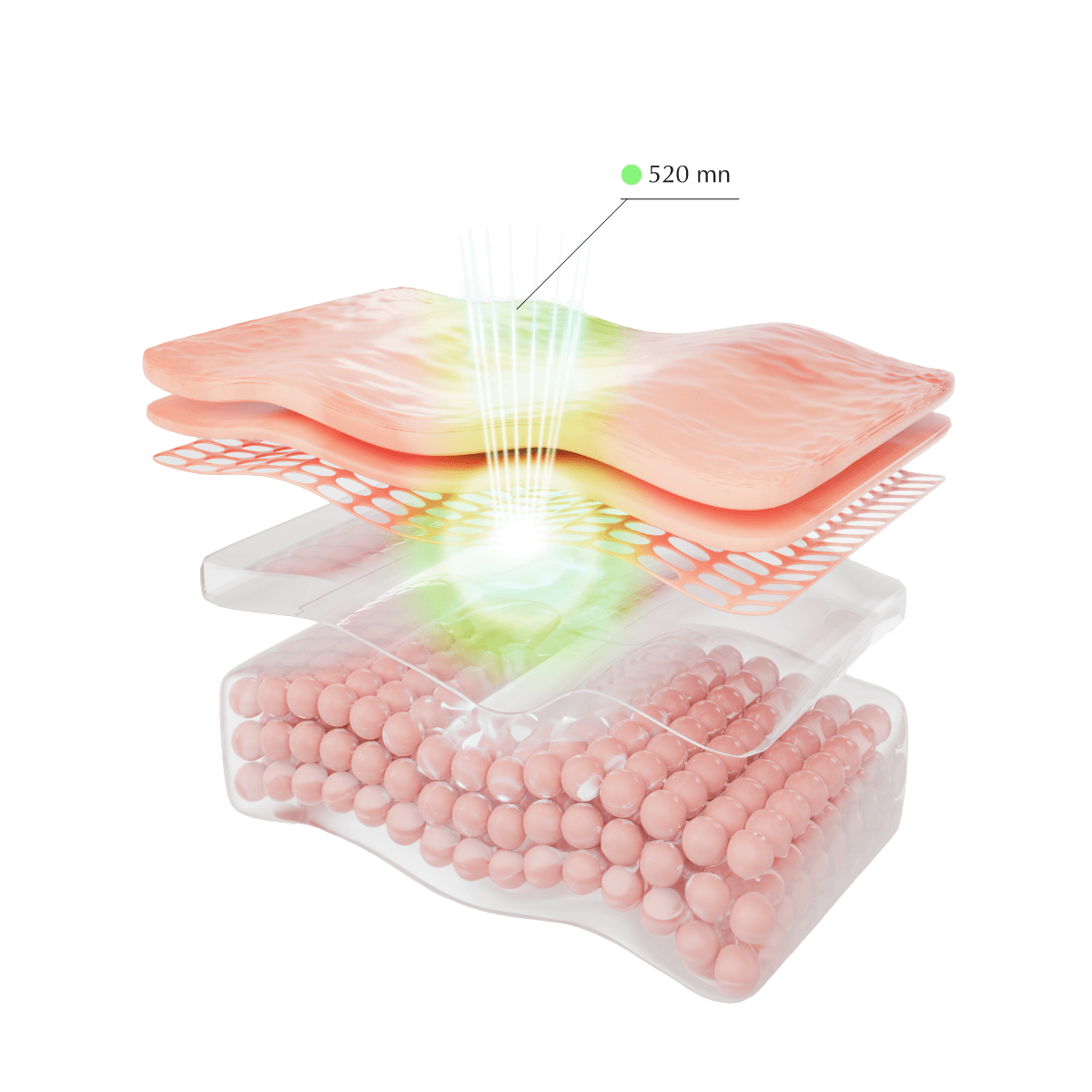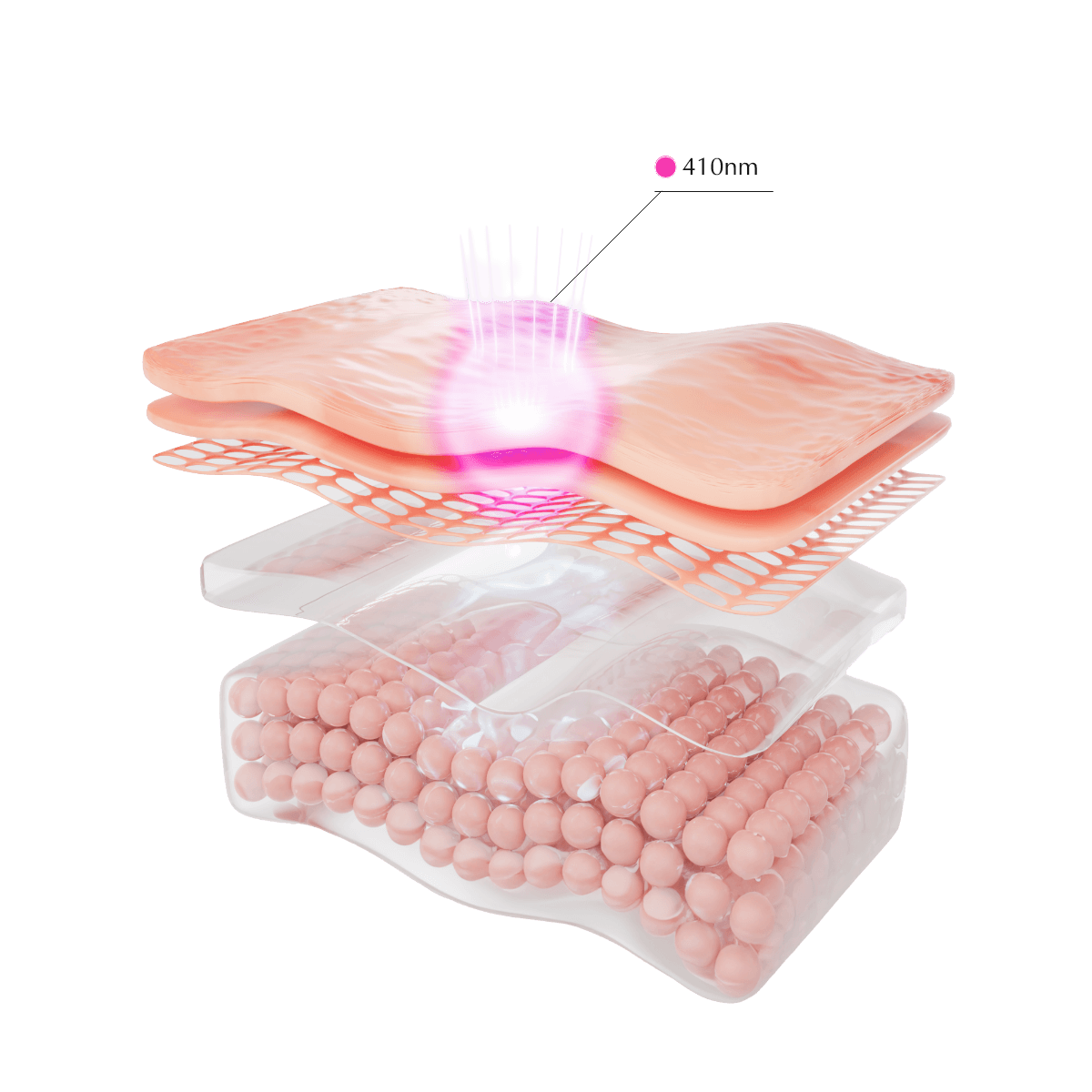Unlocking the Skin's Potential: The Science and Benefits of NIR Light Therapy
Introduction:
In the ever-evolving world of skincare, we constantly seek out the next breakthrough promising youthful vitality and radiant health. Amidst an ocean of trends, Near-Infrared (NIR) Light Therapy emerges as a beacon, offering more than just fleeting benefits. It's a science-backed revolution, a key to unlock the skin's inherent potential. This deep-diving light therapy goes beyond the superficial layers, targeting the foundational building blocks of healthy skin.
As we peel back the layers of NIR light therapy, we find a compelling narrative of cellular transformation. It's a tale of photons interacting with mitochondria, of energy production ramping up, and of the quiet healing that begins deep within the dermis. Through light and skin, we'll explore how NIR stands as a pillar of modern skincare, promising an approach to beauty that is both innovative and steeped in clinical research.
The Underlying Mechanism: How NIR Light Therapy Works
- The Nature of NIR Light
- Cellular Interactions and ATP Production
Clinical Evidence: What the Research Says
- Studies on Collagen and Elastin
- The Impact on Skin Repair and Rejuvenation
A Spectrum of Benefits: NIR Light Therapy for Different Skin Concerns
- Anti-Aging and Wrinkle Reduction
- Scar Treatment and Skin Texture Improvement
- Combatting Inflammation and Redness
Integrating NIR Light Therapy: Practical Tips for Home Use
- Choosing the Right Device
- Creating a Consistent Skincare Routine
- Safety and Best Practices
The Underlying Mechanism: How NIR Light Therapy Works
The Nature of NIR Light
Near-Infrared (NIR) light therapy is a sophisticated treatment that delves deep into the skin's layers, reaching the cells and tissues where it can do the most good. Unlike the harmful rays of the sun, NIR light is a safe and therapeutic wavelength that we cannot see but our cells can feel. It operates in a spectrum that bypasses the outer dermis, directly stimulating the underlying structures of the skin.
[Insert simple infographic about wavelengths – color spectrum and NIR = visible/invisible]
Cellular Interactions and ATP Production
At the core of NIR light therapy's effectiveness is a process known as photobiomodulation. This process triggers a biochemical reaction within the mitochondria – the powerhouses inside our cells. NIR light energizes these mitochondria, leading to increased production of ATP (adenosine triphosphate), which is the energy currency of the cell. More ATP means that cells have the energy they need to perform at their best – to repair, renew, and rejuvenate.
This boost in cellular energy has a cascade of positive effects on the skin. It can lead to enhanced collagen production, which is essential for maintaining the skin's elasticity and reducing the signs of aging. Moreover, the increased ATP can accelerate the healing of damaged tissues, making NIR light therapy a valuable tool for reducing the appearance of scars and other skin imperfections.
While comprehensive clinical research is ongoing, studies have shown promising results. For instance, a study published in the Journal of Clinical and Aesthetic Dermatology reported that subjects who received NIR light therapy experienced improvements in skin complexion and texture. Another study highlighted in the Archives of Dermatological Research found a significant increase in collagen density after NIR treatment sessions.
These findings align with the anecdotal reports from countless users who have incorporated NIR light therapy into their skincare routines and have noticed more supple, youthful-looking skin. By promoting skin health at the cellular level, NIR light therapy stands out as a non-invasive, scientifically sound approach to modern skincare.
Clinical Evidence: What the Research Says
As the allure of NIR light therapy in skincare garners attention, it's the robust clinical evidence that cements its place in the beauty and medical arenas. The scientific community has taken a rigorous approach to understanding the effects of NIR light, with particular focus on its impact on collagen and elastin, as well as its overall skin repair and rejuvenation benefits.
Studies on Collagen and Elastin
Collagen and elastin are the skin's structural proteins, essential for maintaining its firmness, elasticity, and youthful appearance. A decline in these proteins is a hallmark of aging skin. NIR light therapy has been the subject of numerous studies aimed at assessing its role in stimulating the fibroblasts—cells responsible for collagen and elastin production.
For example, a randomized, placebo-controlled trial found that patients who underwent NIR light therapy experienced a significant increase in collagen density, which was accompanied by an improvement in skin texture and elasticity. These findings provide compelling evidence that NIR light therapy can enhance the skin's natural collagen and elastin synthesis, potentially reversing some signs of aging.
The Impact on Skin Repair and Rejuvenation
The reparative properties of NIR light extend beyond the cosmetic; they play a pivotal role in the skin's healing process. Research has demonstrated that NIR light can accelerate the repair of skin tissue, reduce inflammation, and lead to faster wound healing. This is particularly beneficial following skin damage caused by factors like acne, sun exposure, and certain dermatological procedures.
A study published in the Dermatologic Surgery journal highlighted the accelerated healing times in patients who received NIR light therapy post-procedure, with reduced downtime and less post-inflammatory hyperpigmentation. This underlines the therapy's potential as an adjunct to traditional skin rejuvenation methods, offering a non-invasive means to enhance the skin's natural healing abilities.
The wealth of clinical evidence underscores NIR light therapy's role as a credible, science-backed option for those seeking to improve their skin health. It's a testament to the potential of harnessing light in the quest for skin vitality and a rejuvenated appearance. As research continues to evolve, NIR light therapy promises to remain at the forefront of innovative skincare solutions.
A Spectrum of Benefits: NIR Light Therapy for Different Skin Concerns
The reach of NIR light therapy extends across a spectrum of skin concerns, affirming its versatility as a skincare solution. From the battle against aging to the remediation of textural irregularities, NIR light therapy offers a non-invasive route to a multitude of skin improvements.
Anti-Aging and Wrinkle Reduction
The quest for a timeless appearance is as old as time itself, and NIR light therapy offers a contemporary answer. It addresses the root causes of aging by penetrating the skin's surface to stimulate cellular repair and collagen production. With regular use, NIR light can significantly diminish the depth and appearance of wrinkles, leading to smoother, firmer skin. A landmark study in the Journal of Investigative Dermatology showed that subjects using NIR therapy experienced noticeable wrinkle reduction and skin tightening, with results persisting over time.
Scar Treatment and Skin Texture Improvement
Scars and uneven skin texture affect not just the skin's appearance but also its health. NIR light therapy has been shown to promote the remodelling of scar tissue and enhance overall skin texture. A clinical trial published in the Archives of Facial Plastic Surgery revealed that NIR light therapy facilitated the healing of post-surgical scars, blending them more seamlessly with surrounding tissues and improving skin's overall texture.
Combatting Inflammation and Redness
Inflammation is often the body's first line of defense but can also be a sign of stress, irritation, or underlying skin conditions. NIR light therapy has anti-inflammatory properties that can soothe the skin, reduce redness, and calm irritation. A study in the International Journal of Dermatology found that NIR treatments led to a significant reduction in skin inflammation markers, offering relief for conditions such as rosacea and acne.
As the body of research grows, the potential of NIR light therapy becomes increasingly clear. It stands out as a multi-faceted tool capable of addressing a range of skin issues, all while being simple and safe to use. It’s a promising addition to skincare routines for those who seek holistic and effective ways to care for their skin.
Integrating NIR Light Therapy: Practical Tips for Home Use
Incorporating Near-Infrared (NIR) light therapy into your home skincare regimen can be a game-changer for your skin's health and appearance. Here's how to integrate this innovative treatment effectively and safely:
Choosing the Right Device
Selecting the appropriate NIR light therapy device is pivotal. Consider the following when making your choice:
- Spectrum Coverage: Ensure the device emits the specific NIR wavelengths that are most effective for skin concerns.
- FDA Approval: Look for devices that have been cleared by the FDA, indicating they've been assessed for safety.
- Brand Reputation: Opt for brands with a proven track record, like those renowned for their research and customer satisfaction.
- User-Friendly Design: The device should be easy to use, with clear instructions and comfortable ergonomics.
Creating a Consistent Skincare Routine
Consistency is key to seeing results from NIR light therapy. Here's how to build it into your routine:
- Frequency: Start with the frequency recommended by the device manufacturer, often several times a week.
- Duration: Each session should last as long as the device's guidelines suggest, usually between 1 to 30 minutes.
- Timing: Incorporate NIR therapy at a time of day that aligns with your existing skincare routine, such as after cleansing and before moisturizing.
Safety and Best Practices
While NIR light therapy is generally safe, it's important to follow best practices to ensure optimal results and avoid any potential risks:
- Eye Protection: Use proper eye protection if recommended by the device manufacturer.
- Skin Sensitivity: Begin with shorter sessions to gauge skin sensitivity, gradually increasing as tolerated.
- Hygiene: Keep the device clean according to the instructions to prevent skin irritation.
- Consultation: If you have any underlying skin conditions, consult with a dermatologist before beginning NIR light therapy.
By adhering to these guidelines, you can safely and effectively enjoy the benefits of NIR light therapy from the comfort of your home, paving the way to healthier, more youthful-looking skin.
Conclusion:
NIR light therapy stands at the crossroads of innovation and tradition in skincare, merging cutting-edge technology with the body's natural healing processes. As we've explored, the benefits of NIR light extend from rejuvenating aged skin to soothing irritated complexions, proving its versatility and efficacy. Embracing this gentle yet powerful therapy can be a transformative addition to your skincare routine, offering a pathway to not only look your best but feel your best as well.
Ready to illuminate your skincare? Visit our Light Therapy page to discover more about light therapy or begin your transformation today – your skin will thank you tomorrow. Shop Now.
Sources:
Russell, B. A., Kellett, N., & Reilly, L. R. (Year). A study to determine the efficacy of combination LED light therapy (633 nm and 830 nm) in facial skin rejuvenation. [Journal Name], [Volume(Issue)], Page Range. PMID: 16414908. DOI: 10.1080/14764170500370059.
Whelan, H. T., Smits Jr, R. L., Buchman, E. V., Whelan, N. T., Turner, S. G., Margolis, D. A., Cevenini, V., Stinson, H., Ignatius, R., Martin, T., Cwiklinski, J., Philippi, A. F., Graf, W. R., Hodgson, B., Gould, L., Kane, M., Chen, G., & Caviness, J. (Year). Effect of NASA light-emitting diode irradiation on wound healing. [Journal Name], [Volume(Issue)], Page Range. PMID: 11776448. DOI: 10.1089/104454701753342758.
de Almeida, P., Lopes-Martins, R. A. B., De Marchi, T., Tomazoni, S. S., Albertini, R., Corrêa, J. C. F., Rossi, R. P., Machado, G. P., da Silva, D. P., Bjordal, J. M., & Leal Junior, E. C. P. (Year). Red (660 nm) and infrared (830 nm) low-level laser therapy in skeletal muscle fatigue in humans: what is better? [Journal Name], [Volume(Issue)], Page Range. PMID: 21814736. PMCID: PMC3282894. DOI: 10.1007/s10103-011-0957-3.
Avci, P., Gupta, A., Sadasivam, M., Vecchio, D., Pam, Z., Pam, N., & Hamblin, M. R. (Year). Low-level laser (light) therapy (LLLT) in skin: stimulating, healing, restoring. Seminars in Cutaneous Medicine and Surgery, 32(1), 41–52. PMCID: PMC4126803. PMID: 24049929. NIHMSID: NIHMS430657. DOI: 10.3390/s21206943.
Hamblin, M. R. (Year). Mechanisms and applications of the anti-inflammatory effects of photobiomodulation. AIMS Biophysics, 4(3), 337–361. PMCID: PMC5523874. PMID: 28748217. NIHMSID: NIHMS879874. DOI: 10.3934/biophy.2017.3.337.
Li WH, Seo I, Kim B, Fassih A, Southall MD, Parsa R. Low-level red plus near infrared lights combination induces expressions of collagen and elastin in human skin in vitro. Int J Cosmet Sci. 2021 Jun;43(3):311-320. doi: 10.1111/ics.12698. Epub 2021 May 25. PMID: 33594706.




Leave a comment
This site is protected by hCaptcha and the hCaptcha Privacy Policy and Terms of Service apply.